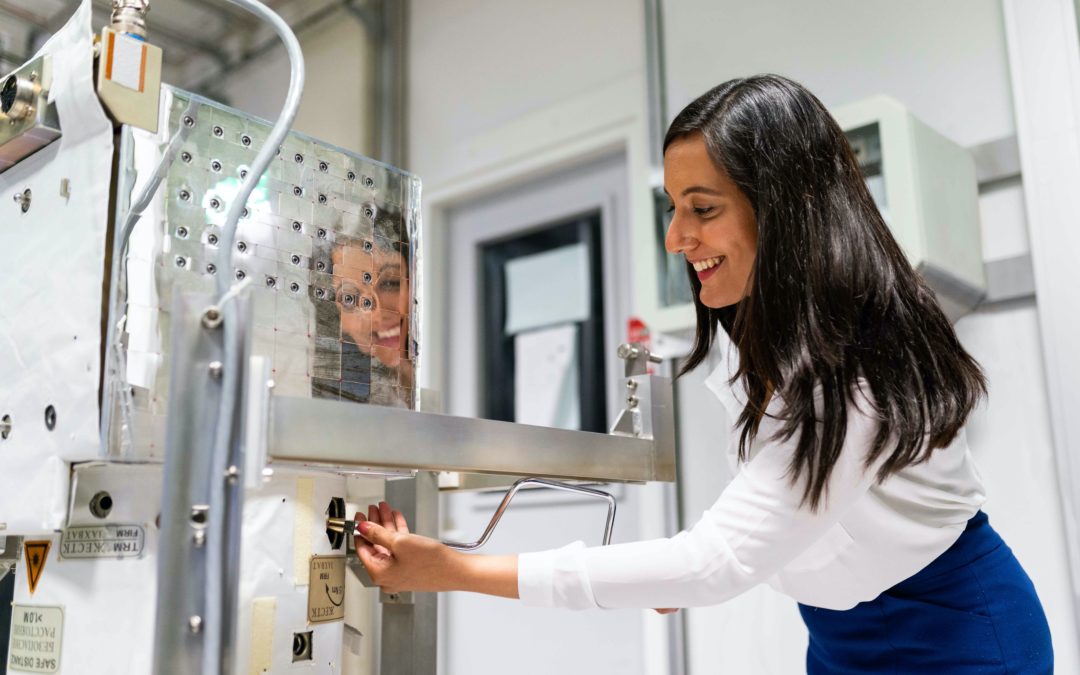Pressurized cleanrooms are used in a range of industries and applications. Varying levels of pressure determines the way air naturally moves in a space. High and low pressure, or positive and negative pressure, can be used as a tool in cleanroom environments to help cleanrooms reach their cleanroom classifications and protect their products and people. Let’s explore air pressure in cleanrooms to discover how it works.
How Does Air Pressure in Cleanrooms Work?
It’s a well-known natural process for air to flow from high to low pressure. Examples of this are found around us every day. Wind and weather are formed from the uneven heating of the earth’s surface, which generates pockets of high and low pressure air. If you’ve ever witnessed the sudden closing of a door as air is sucked out of a room where no breeze was felt, what you experienced was the high pressure air moving to a low pressure area to achieve stasis. Air escaping from a balloon is traveling from a high pressure environment to the relatively low pressure of the surrounding air.
What happens in all of these situations is that when air is moving in one direction, it’s not moving the opposite direction. When air is moving out of the balloon, there isn’t also air moving into the balloon, as long as the air inside the balloon is more pressurized. This concept can be applied to cleanrooms, to stop the flow of air into a cleanroom, or out of it, limiting particle transfer via the air and maintaining a cleaner environment.
To state this more plainly, higher pressure air within a cleanroom (compared to the air outside the room) blocks against contaminants entering the cleanroom, as air naturally wants to flow out. Conversely, lower pressure air within a cleanroom can trap contaminants and prevent them from leaving a cleanroom, as the natural flow of air wants to move in.
Using pressure in cleanrooms, either higher pressure (positive pressure), or lower pressure (negative pressure) can be extremely useful in many cleanroom applications — but how do you implement it in the cleanroom design?
Using Pressure in Cleanroom Design
Positive and negative pressure in cleanrooms is achieved by controlling how much air is put into the cleanroom, and how much is withdrawn.
In a positive pressure cleanroom, clean, filtered air is consistently pumped into the room through the HEPA filtration and cleanroom HVAC system. In the event that a door or window was opened in the cleanroom, air would rush out into the outside environment.
This positive pressure ensures that in the event of a breach or leak in the cleanroom, the products and processes within the cleanroom are protected. Because the cleanroom has positive pressure, the air is forced out of the cleanroom, preventing contaminated or unfiltered air from seeping in.
To achieve negative air pressure, external exhausts pull air from the cleanroom at a faster rate than air is introduced over a span of time. The resulting negative pressure means air will want to flow into the cleanroom to fill the low pressure area, effectively stopping contaminants from going against that natural movement in order to escape the cleanroom.
To maintain either positive or negative pressure in cleanrooms, adjacent spaces must be maintained at a lower or higher pressure than that of the cleanroom, respectively.
If you implement a pressurization system into your cleanroom design, having a pressure monitoring system is important to ensuring balance and consistency within your cleanroom. The monitoring system will check and maintain consistent pressure, which can be adjusted manually or automatically.
Positive Pressure Cleanroom Applications
High pressure, or positive pressure cleanrooms are extremely useful in applications where the slightest particle interference could disrupt processes within the cleanroom. Semiconductor cleanrooms, microprocessor cleanrooms, and aerospace and defense cleanrooms are just a few examples of industries that benefit from positive pressure cleanrooms, as they are extremely averse to contaminating particles. Many medical cleanrooms use positive pressure, to protect sensitive patients and maintain a controlled space.
Even when the stakes aren’t quite as high, using slightly positive pressure in cleanrooms can help reach cleanroom classifications and maintain a cleaner environment.
Negative Pressure Cleanroom Applications
Low pressure cleanrooms, or negative pressure cleanrooms, are ideal for applications that need to isolate substances, particles, or fumes inside the cleanroom environment to protect the space outside of the cleanroom. They are widely used in medical cleanrooms, for medical research, testing, and the development of treatments using sensitive substances.
Pharmaceutical applications also use negative pressure in cleanrooms as part of a segmented layout. One room is kept at a lower pressure, while the ante room immediately outside it is maintained at a slightly higher pressure. This allows employees to transition into the negative pressure room with minimized disruption.
High and low pressure, or positive and negative pressure, can both be used as tools in cleanroom environments to protect against entering contaminants (in positive pressure cleanrooms) or contaminant leakage (in negative pressure cleanrooms). Using the natural movement of air due to pressure, we can build safer, more effective cleanrooms.
Think a negative or positive pressure cleanroom is right for you? Reach out to Angstrom Technology. Our cleanroom experts can design the best air flow patterns and containment systems for your application.


